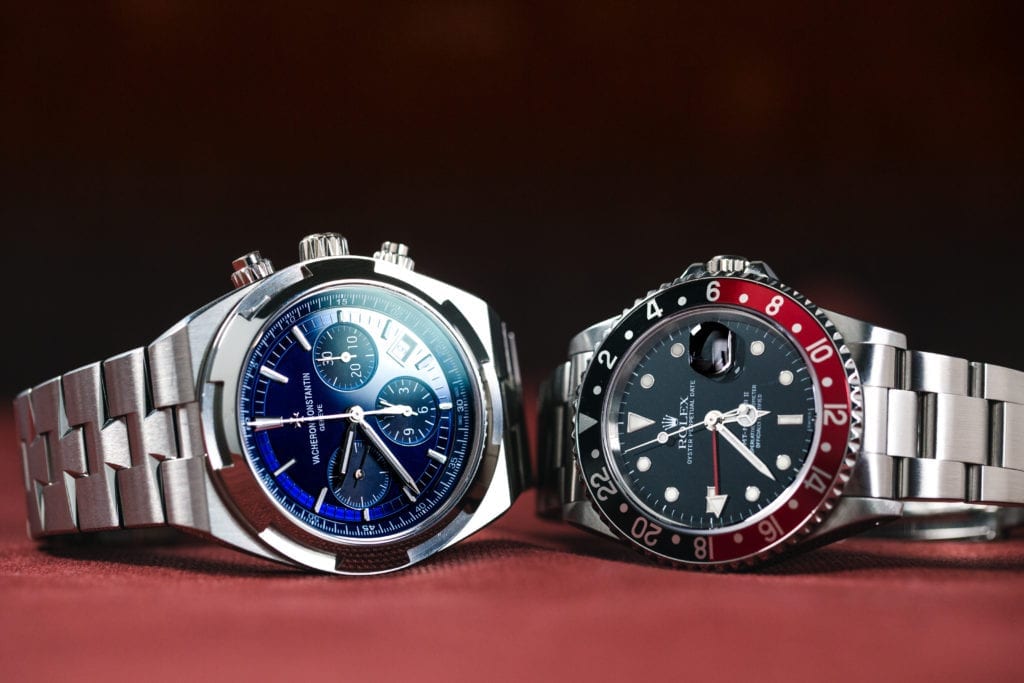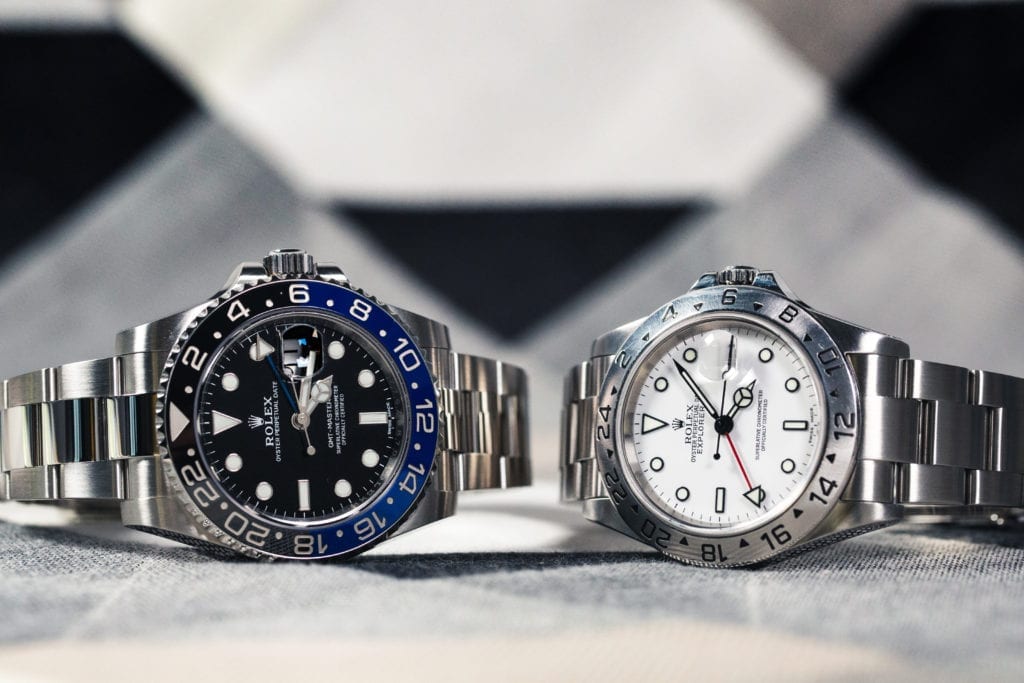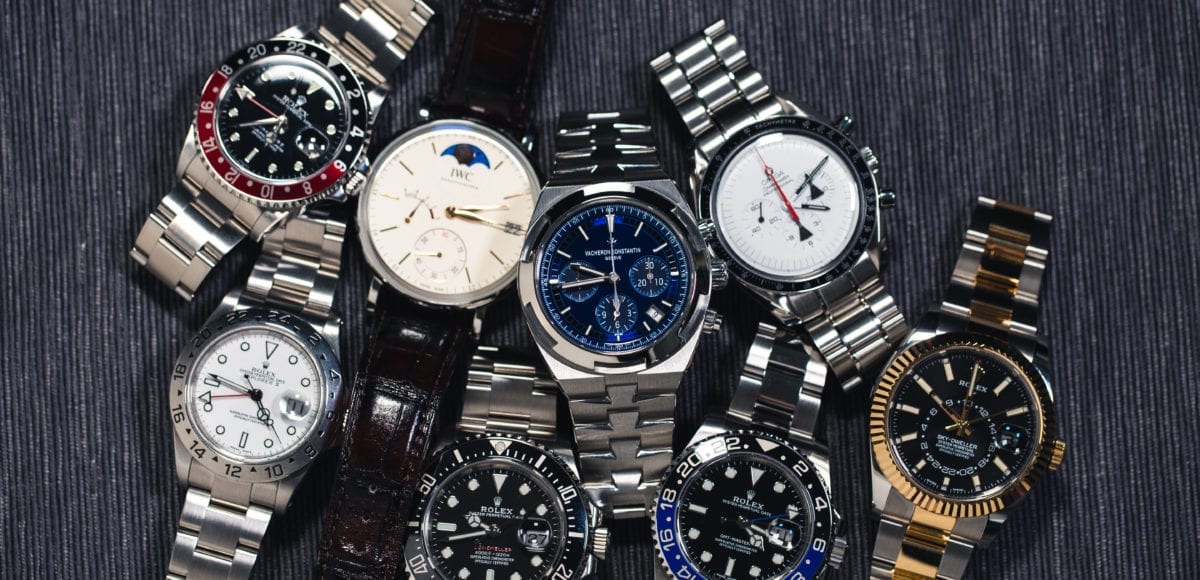Comparing Vacheron Constantin vs. Rolex
When you think of a brand comparison, looking at Vacheron Constantin vs. Rolex may seem like an unusual matchup. At a glance, the two manufacturers might seem quite different. Vacheron Constantin established 150 years prior to Rolex. Rolex has built a reputation for its sport and tool watches. On the other hand, Vacheron Constantin’s signature dress watches have an unmistakable aesthetic and technical prowess in the form of intricate complications. Vacheron Constantin and Rolex are known for different qualities, but have some overlap. We compare the two brands and what makes each unique.

Key Qualities of Vacheron Constantin
Vacheron Constantin is one of the oldest watch manufactures in the world that has remained in continuous production. In its history, spanning over 250 years, the brand has notched a number of memorable achievements. In 1770, they designed the first complicated watch, and in 1779, they produced the first engine-turned dials. In the next century, one of their lead engineers created the pantograph. This machine proved crucial to the watchmaking community and the standardization of watch movements. Vacheron Constantin went on to debut their first pocket chronometer in 1869 and their first antimagnetic timepiece in 1885. One of their most monumental achievements came in 1901. That year, they became the first watchmaker to receive the coveted Hallmark of Geneva. 1955 marked the brand’s 200th anniversary and the launch of the Caliber 1003, the world’s thinnest manually wound caliber. Their momentum has continued into the new millennium with the celebration of their 250th anniversary in 2005. To commemorate the occasion, they released the Tour de I’lle, a timepiece showcasing an impressive sixteen complications and 834 parts. Through each milestone, Vacheron Constantin has always embodied the motto of their founders, “Do it better if possible, and that is always possible.”
The Reputation of Rolex
Though Rolex is a much younger brand, they too have gained many impressive accomplishments in their 115-year history. In their first five years of business, they developed the first wristwatch to receive chronometer certification. Four years later, they received a Class A precision certification, which was typically reserved for marine chronometers. In 1926, they debuted the first water resistant wristwatch, the Oyster, and in 1931, they patented the first perpetual, self-winding mechanism. The next several decades brought about further advancements in the field of watchmaking and some of their most famous models. In 1945, they introduced the first self-winding wristwatch to display the date on the dial, the Datejust. They launched the first dive watch water-resistant to 100 meters in 1953 – the Submariner. A year later, they released the first watch to display the time in multiple time zones simultaneously: the GMT Master. Finally, they launched the first wristwatch to display the date and day of the week in a window on the dial in 1956 – the Day-Date. This spirit of invention continued into the new millennium with the Sky Dweller in 2012. This collection marked Rolex’s first entirely new watch and entirely new complication in two decades. Rolex has reached many milestones in a relatively short time, making it clear why they’re the king of watches.
Vacheron Constantin vs. Rolex: Aesthetic vs. Function
Vacheron Constantin and Rolex are both equally influential brands in the watch industry with countless achievements to their names. However, when looking at Vacheron Constantin vs. Rolex in terms of their watches themselves, there are some key aesthetic and functional differences. To compare, let’s match up two of their pilot watches: the Vacheron Constantin Overseas and the Rolex GMT Master II. Despite Vacheron Constantin being a much older brand, the GMT Master first launched in 1954, over four decades prior to the Overseas in 1977. Both Rolex and Vacheron Constantin reinvented the signature models several decades after their initial debuts. The GMT Master became the GMT Master II in 1983, and the Overseas received a makeover in 1996. Though the GMT Master and Overseas share a somewhat similar evolution, they’re two totally unique models.

Rolex’s GMT line has always had a distinctly sporty appeal, from the original GMT to the GMT Master II. The introduction of various color iterations, each with a distinct nickname, have given the model stylistic flair and secured its icon status. However, at the core of the GMT collection is functionality. With the GMT Master II, Rolex upped the ante with the addition of a quickset hour hand that’s independently adjustable. It allows the wearer to set the local time without stopping the second, minute, or fourth 24-hour GMT hand. In other words, the GMT Master II can display the time in not just two but three time zones simultaneously.
While Rolex has reputation for being producers of sport and tool watches, Vacheron Constantin is typically associated with dress watches. That all changed in 1996 with the introduction of the reimagined Overseas. The model launched the brand into the sport watch category. Vacheron Constantin has always emphasized the utility of the Overseas. The model is available with a variety of complications, like a chronograph function, dual-time zone indicator, perpetual calendar, and world timer. However, the Overseas collection remains true to the brands roots with an equal focus on aesthetic. This refinement and elegance is particularly apparent in the revamped 2016 version.
Choosing a Rolex vs. Vacheron Constantin
When comparing Vacheron Constantin vs. Rolex, many of the stereotypes ring true. A majority of Vacheron Constantin’s models fall into the dress watch category. They also have a history of incorporating advanced complications into their models. On the other hand, Rolex is famous for their sport and tool watches. This has allowed them to cross over into pop culture and secure high-profile partnerships with sporting events and athletes. The result of these technical and aesthetic differences ultimately results in a difference in price. Vacheron Constantin models typically come in at a higher cost than Rolex. However, as you can see from a more direct comparison of two of their pilot watches, there are exceptions. Sometimes, the GMT Master II is more expensive than the Overseas, and the Overseas is an admirable tool watch. Each and every model produced by both of these brands is backed by many years of experience and dedication to the fine art of watchmaking. That said, you can’t go wrong with a model from either of these reputable brands.
Get More Articles Like This in Your Inbox
We're constantly creating great content like this. So, why not get it delivered directly to your inbox? By subscribing you agree to our Privacy Policy but you can unsubscribe at any time.






